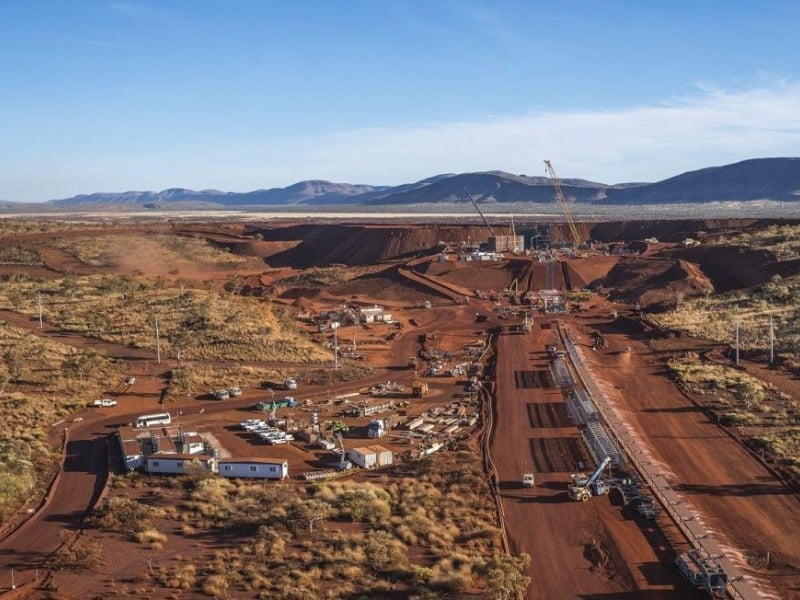New research on critical minerals sector participants has recommended that the Foreign Investment Review Board be reformed to “streamline” investment and outline which part of the value chain technology investment should prioritise.
The report notes that some respondents called for the establishment of a “full-time, impartial review board with the relevant capacity to advise Parliament directly on issues of foreign investment; streamline review processes; and increase the flexibility of investment thresholds”.
Unlike the current Foreign Investment Review Board, which is constrained by government red tape, an independent board would be better able to separate political pressure, national security interests, and economic incentives, the report argues. It also notes that the “threshold for investment review went to $0” during the pandemic, which created a large backlog of applications.
Following interviews with industry experts, several collaborative workshops, and a survey of 110 miners, suppliers, government, financiers, researchers, and manufacturers, resources-focused research group State of Play released its critical minerals industry perspective report on Monday.
It was prepared with backing from major sponsors METS Ignited, CSIRO, the Minerals Research Institute of Western Australia, and Slate Advisory.

According to the State of Play report, Australian headquartered AVZ minerals was forced by the Foreign Investment Review Board (FIRB) to reduce the investment it would receive from a Chinese state-owned enterprise for lithium development projects in the Democratic Republic of Congo.
In another case, US-based company Austroid Corporation was made to “re-apply for approval to take over the Bald Hills lithium mine, due to uncertainty around backing from a Chinese company”.
At the end of November, Treasurer Jim Chalmers said foreign investment in critical mineral projects needed to be scrutinised. The Treasurer has directed FIRB, other federal agencies, and the states and territories to collate data on the investment in critical minerals companies and to improve how it tracks such investments.
Critical minerals participants also called on the government to strengthen market access to allied countries and to form new alliances given the “times of continued geo-political uncertainty”. China currently dominates large portions of the critical minerals value chain, including 60 per cent of the world’s rare earth metals and 85 per cent of related processing capacity.
The report also highlighted the opportunities for businesses to leverage the “sentiment of European and North Asian countries to shift away from Chinese supply by advertising themselves as a stable and resilient source of critical minerals, who provide a transparent investor experience”.
Greater investment in downstream processing and manufacturing from the federal government was also called for to compete with jurisdictions willing to make “short-term financial sacrifices to attract companies to invest”, such as the United States and the European Union. The report highlights that the US state of Nevada “offered Tesla approximately US$1.25 billion in tax incentives over 20 years to build a gigafactory (including no tax for the first 10 years)”.
When asked to select two parts of the value chain that technology investments should focus on, processing was most frequently cited. Of the respondents 65 per cent selected processing, followed by extraction at 33 per cent.
Further, 47 per cent of respondents said processing is “the most likely source of competitive advantage for critical minerals businesses” in Australia.
With regards to improving critical mineral recovery for material currently treated as a by-product, re-mining of waste was highlighted as the most likely extraction technology to be adopted. Annually, mining produces over 100 billion tonnes of solid waste which contains volumes of critical minerals “at volumes that could supply global markets”.
“For example, it is estimated that BHP’s Olympic Dam project could supply up to 40 per cent of the worlds rare earth elements through its waste streams if it chooses to recover them. Current projects could choose to refine and sell minerals they once considered by-products in response to heightened demand, introducing supply to market at rates that may impact market dynamic,” the report reads.
The federal government is currently consulting on a 2023 refresh of the Critical Minerals Strategy. While it largely overlaps with the strategy released by the Coalition government in March, the consultation paper seeks more advice on how government can support the development and retention of domestic IP, while attracting overseas investment in IP.
Do you know more? Contact James Riley via Email.

